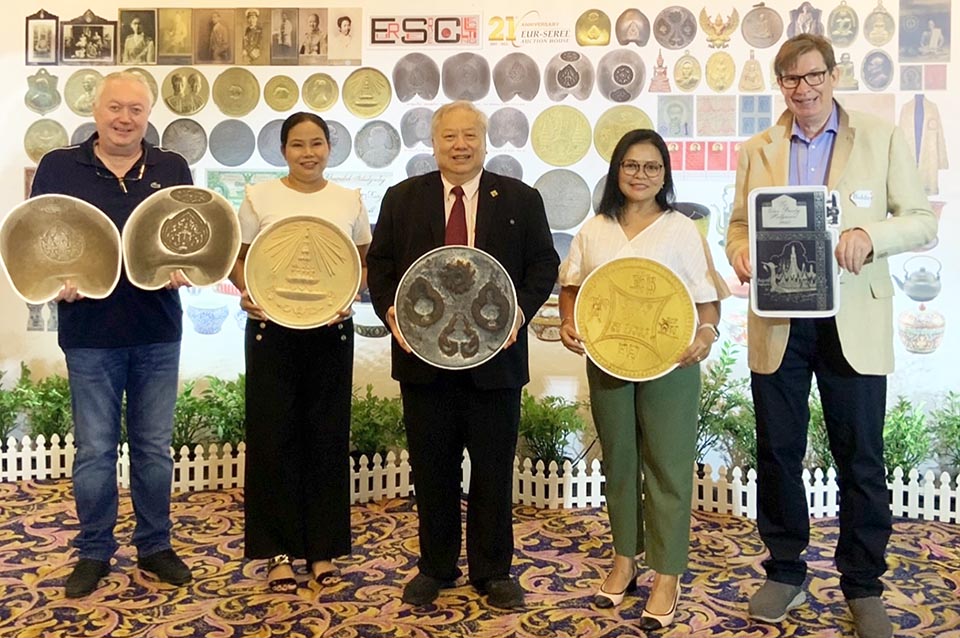
On April 1&2, Eur-Seree Auction House conducted their auction #63. In my article in Pattaya Mail on February 10, I focused on the combined cigarette and lighter case produced by Thai Nakorn Company. The late H.M. Bhumibol Adulyadej, Rama IX, presented the case to Elvis Presley during Their Majesty the King and Queen’s visit to Paramount Studios on the set of G.I. Blues in June 1960. The engraving on the front of the case read, “To Elvis Presley Hollywood 1960”, and on the inside of the box, the words “King Bhumibol Adulyadej To the King of Rock `n` Roll” were engraved.
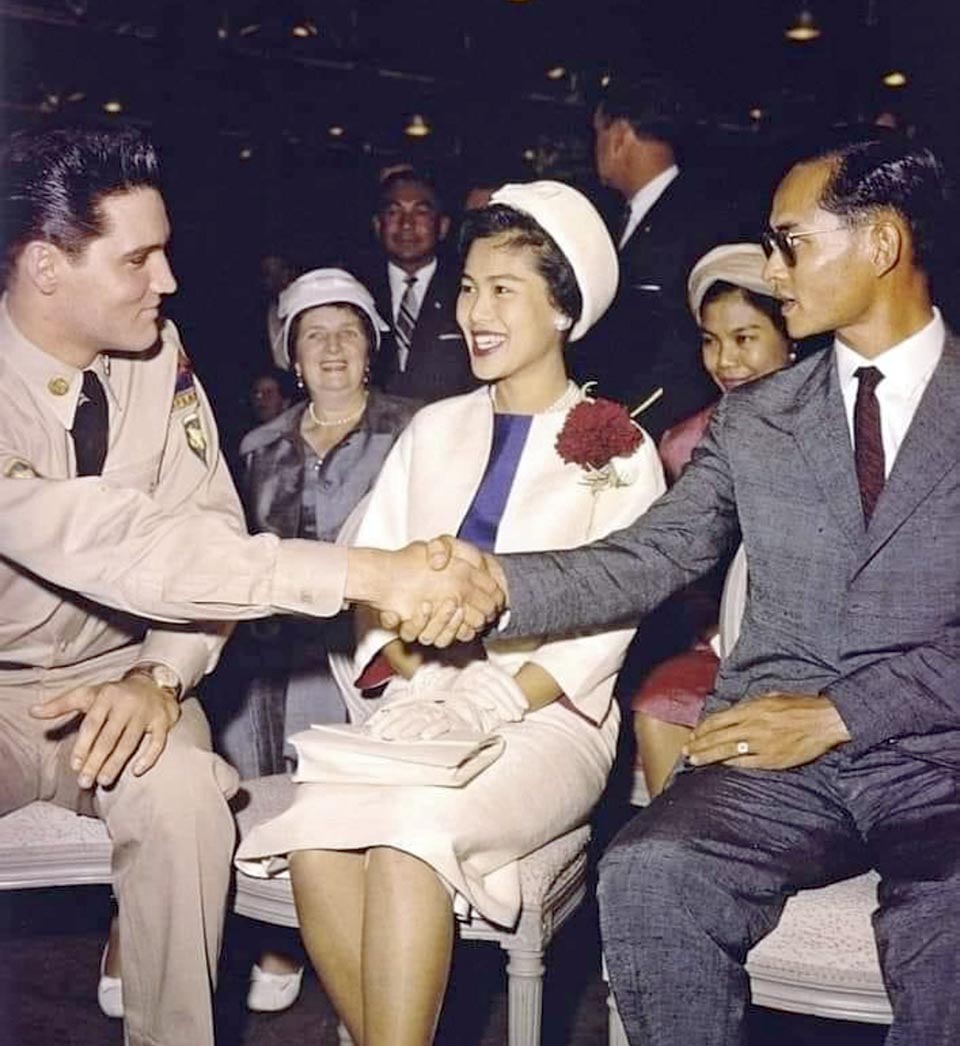
Elvis Presley gave the combined lighter and cigarette box away and when the recipient passed away in 2021 the inheritor of the unique item decided to sell it. In the Eur-Seree auction it had a starting price of Baht 1,200,000. Many wanted to buy this unique box, and the bid ended at Baht 1,850,000. Including 10.7% the buyer had to pay Baht 2,047,950.
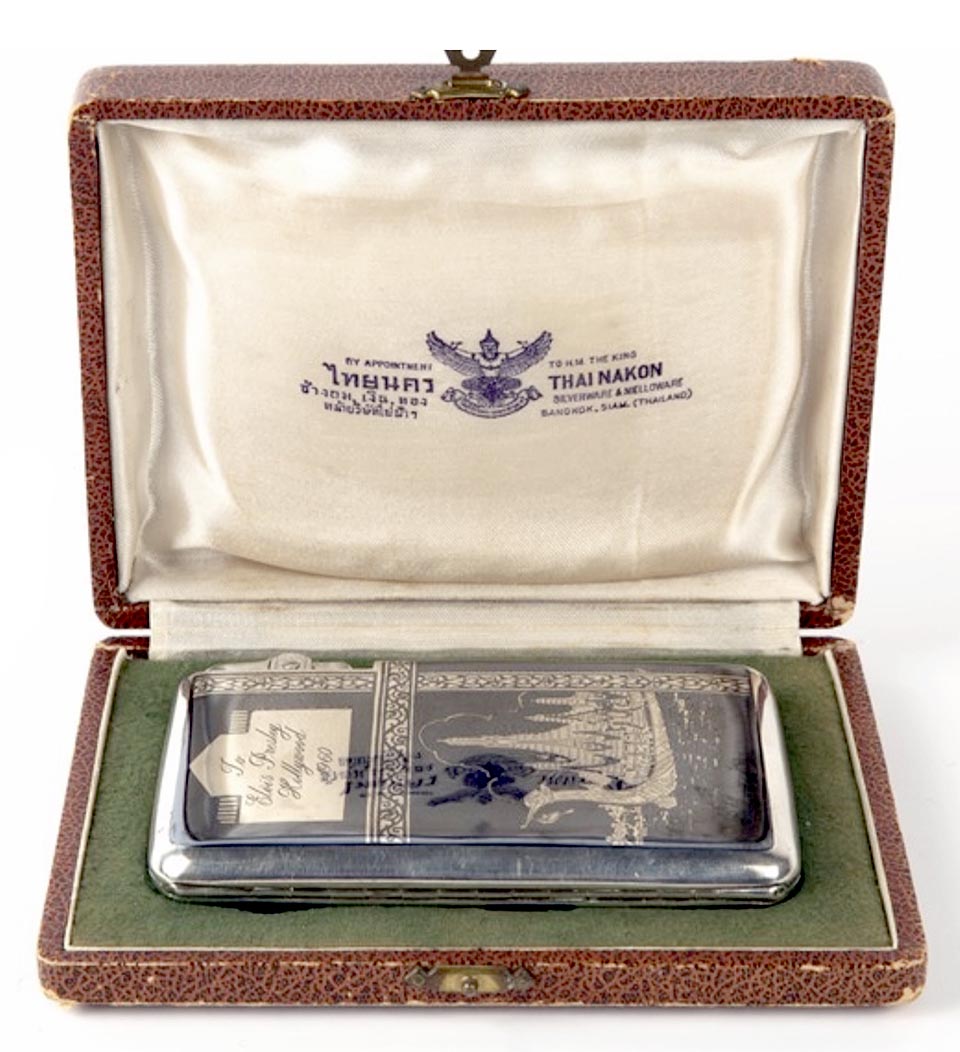

From the 15th century Thailand, Siam used the unique form of payment, the bullet coins or pod duang. The production of bullet coins ceased in 1886 and bullet coins could be exchanged for flat coins until July 31st, 1908. Bullet coins were produced in gold and silver, the smallest, 1/64 Baht, weighing 0.24 grams and the biggest, 80 Baht with the weight of around 1.2 kilos. Not something you would call pocket change.
In the auction there were two of these extremely rare 80 Baht, one Chang coins. The first was produced for King Mongkut, Rama IV’s 60th birthday in 1864, The weight was 1,202.2 grams. The mintage was never announced, but Eur-seree has recorded three in museums and four in private collections. Eur-seree auctioned one similar coin on March 24 2013 for Baht 4,000,000. In this auction the starting price was Baht 2,500,000. There were many competing for this rare coin, and a new record price was set with Baht 6,000,000, including 10.7 premium, the buyer paid Baht 6,642,000.

The second 80 Baht bullet coin in the sale was from 1880 and was struck to mark the occasion when King Chulalongkorn, Rama V‘s age equaled that of his mother at the time of her death. The weight was 1,212.4 grams and the official minting was 8 pieces. On 1st of December 2018 Eur-seree auctioned a similar coin for Baht 8,600,000. The staring price for this beautiful coin was Baht 7,600,000 that it was sold for.
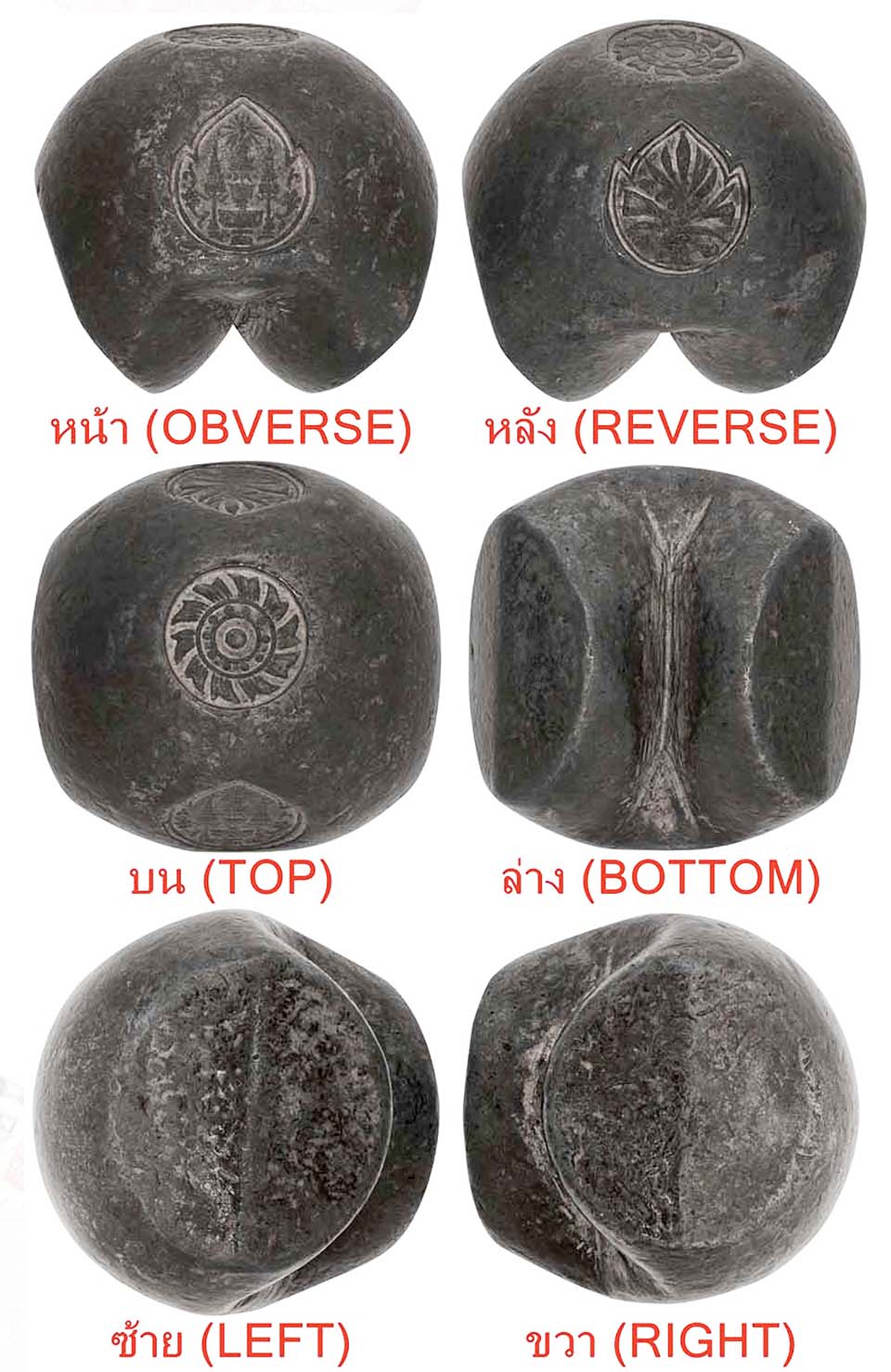
The “smaller” denominations of the 80 Baht bullet coins were also sold in this auction. 40 Baht, half Chang, had a starting price of Baht 1,500,000 and ended being sold for Baht 2,000,000. The 20 Baht started off at Baht 500,000 and sold for Baht 700,000. The 10 Baht starting price was Baht 300,000 and sold for the same. The 4 Baht started at Baht 150,000 and sold for Baht 190,000 and the last coin in this complete series, the 2 Baht, which weighs 30.28 grams, started at Baht 100,000 and sold for Baht 155,000. On top of the prices the buyer had to pay a premium of 10.7%. No doubt even in the coin business, size matters.
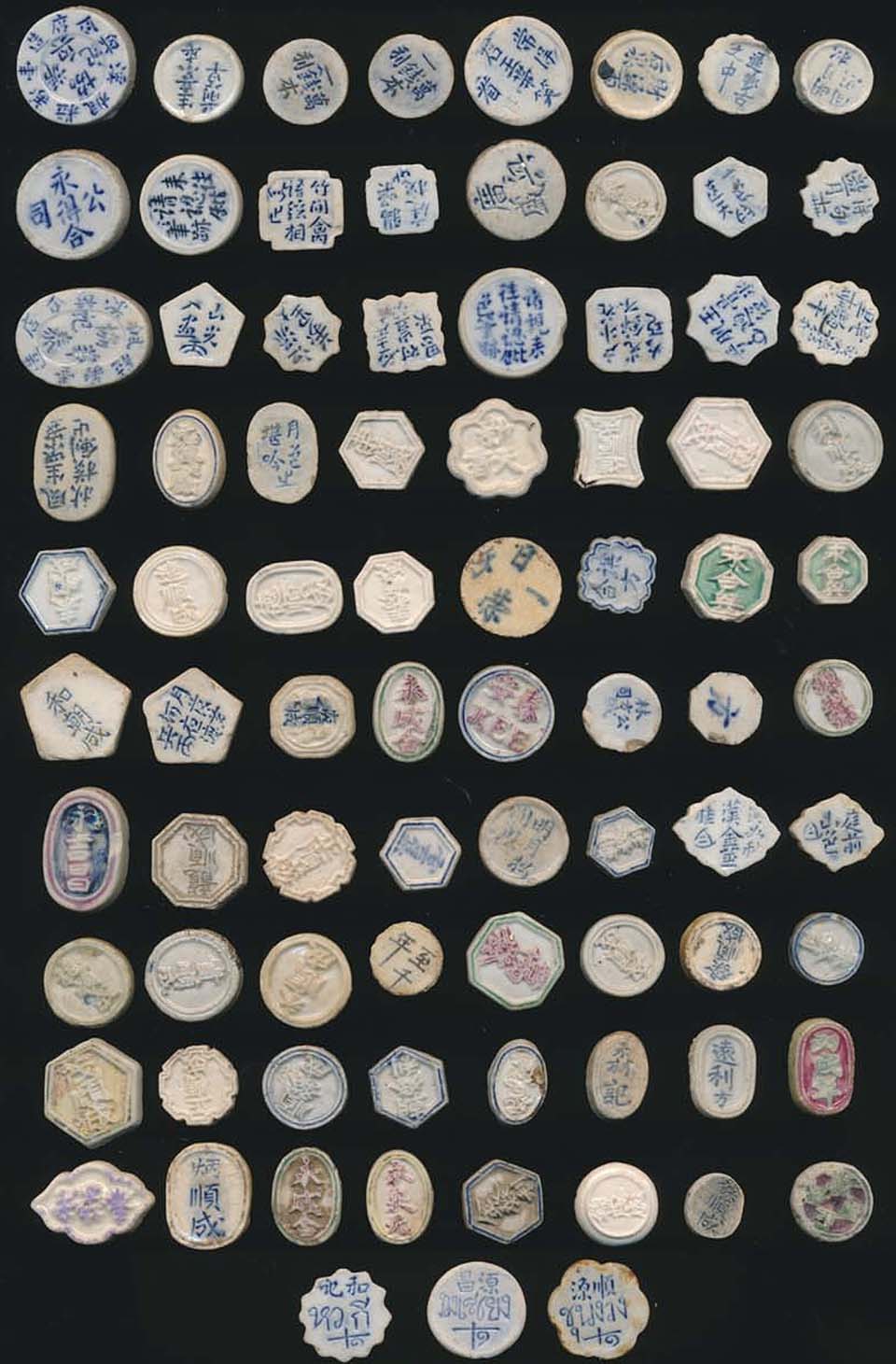
After the Bullet Coins, Pod Duang, were sold the “Braun Collection” of Gambling Tokens were then sold. The gambling tokens were not only used for gambling, but they were also accepted by local shops, as the owners of the gambling houses often were the owners of other local businesses. Most of the gambling tokens were produced in ceramic in China. Some gambling tokens were produced in glass and brass, which are rarer.
Most of the tokens in the auction were sold in lots, and all were sold for more than double the starting price. One lot with 83 pieces 1800s ceramic tokens had a starting price of Baht 10,000 and sold for eight times that amount, fetching Baht 80,000. The price paid is around Baht 1,000 for each of tokens, which is considered a very good price for these ceramic tokens. After brisk competition, this and many of the other lots were sold to the same buyer with the bidding number 817. He must have, after the auction, an impressive collection of gambling tokens.

The Queen Victoria 1800s ceramic token set of 4, Salung, Fuang, 2 Pai and Pai was quite popular. The hexagonal-shaped token is a scarce type. The starting price was Baht 5,000 and it sold for Baht 32,000.
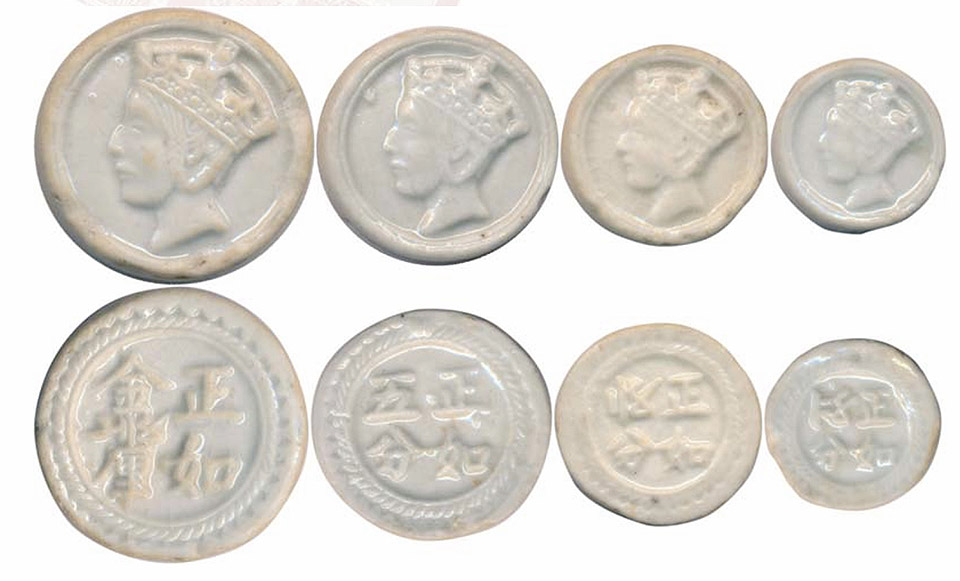
The round shaped Queen Victory ceramic tokens from the same period are more common. The starting price was Baht 5,000 and it sold for Baht 22,000.

A gold Two Baht bullet coin from King Mongkut, Rama IV, was also up for sale. It was minted in1851-1868 with the weight of 30.29 grams. This coin, according to the auctioneer is a museum piece, and the fourth recorded in private collection. Several years ago the Bank of Thailand Museum bought a four and Two Baht gold bullet coin from a private collector for several million Baht. The Two Baht in the auction had a starting price of Baht 1,500,000 and sold for Baht 2,000,000. Including the premium the buyer paid Baht 2,214,000.
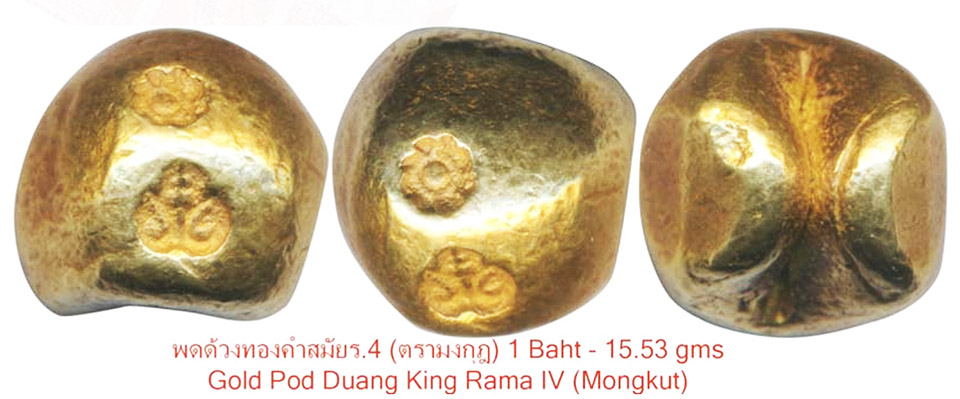
The One Baht gold bullet coin from the same period with the weight of 15.53 grams had a starting price of Baht 200,000 and sold for Baht 240,000. A Half Baht gold coin from the same period, weighing 7.51 grams had a starting price of Baht 40,000. The seller must be happy because it sold for more than twice the amount at Baht 110,000.
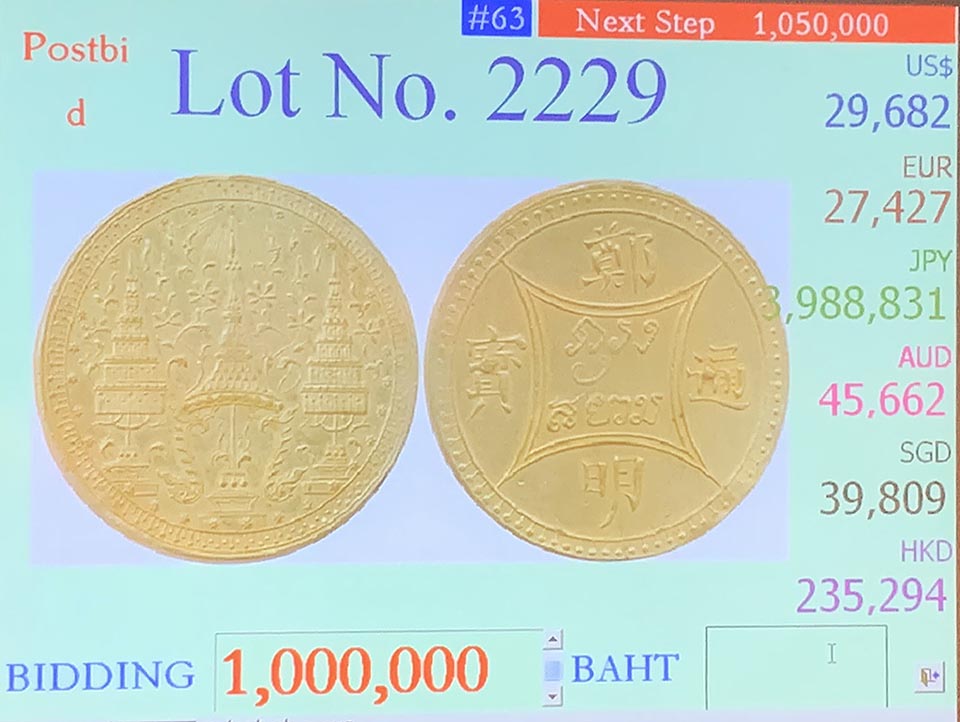
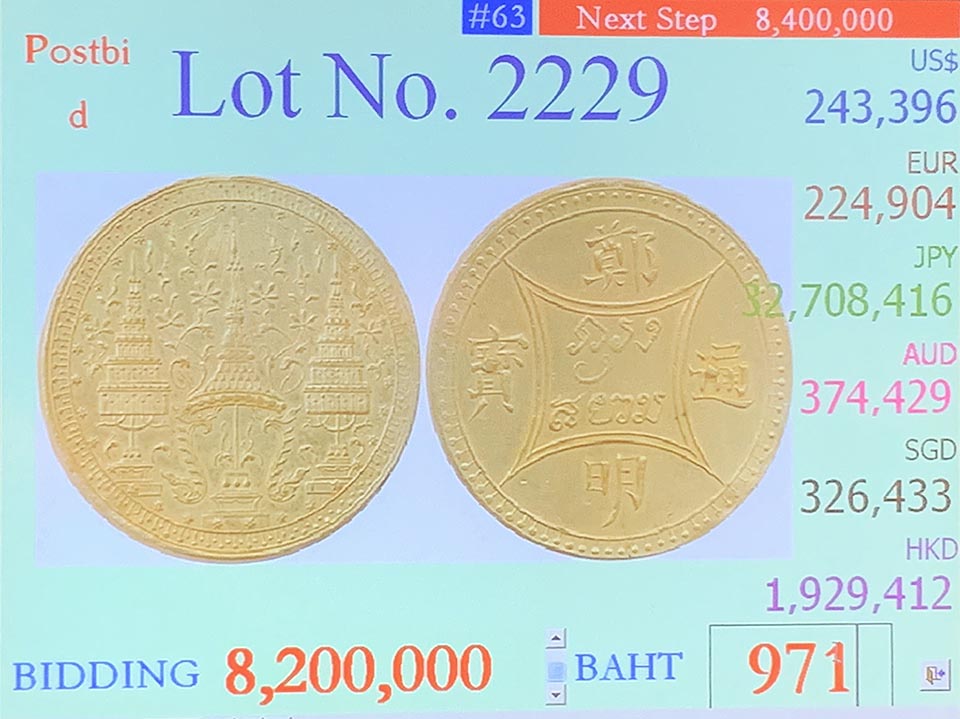
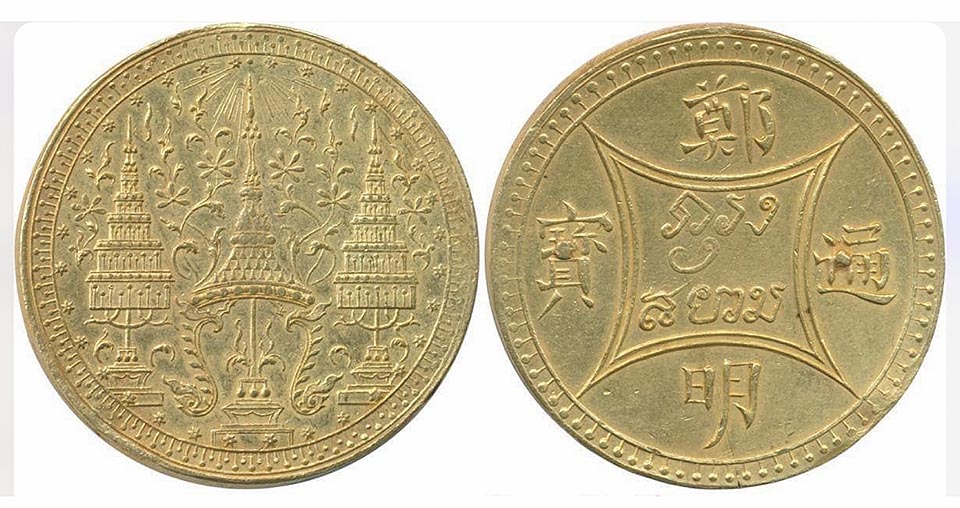
As expected, the most expensive coin in the auction was the 1864 King Mongkut, Rama IV, 4 Baht gold coin struck for the King’s 60th Birthday. On the reverse is the inscription “Krung Siam” enclosed within a frame and the Chinese legend “Cheng Ming Tung Pao” outside the frame.
“Cheng Ming” is the name of Rama IV in Chinese and “Tung Pao” means lawful money. The rare coin has a diameter of 45 mm, and only 4 are recorded in private collections. It had a starting price of Baht 1,000,000. In my article published in Pattaya Mail on February 10, I wrote that the coin would definitely be sold for several times higher than the starting price.
There were several bidders who were hoping to get a bargain. Several bidders went as high as Baht 5,000,000, but only a couple of bidders went higher than that, ending with a final bid of Baht 8,200,000. Including the premium the buyer paid a total of Baht 9,077,400.
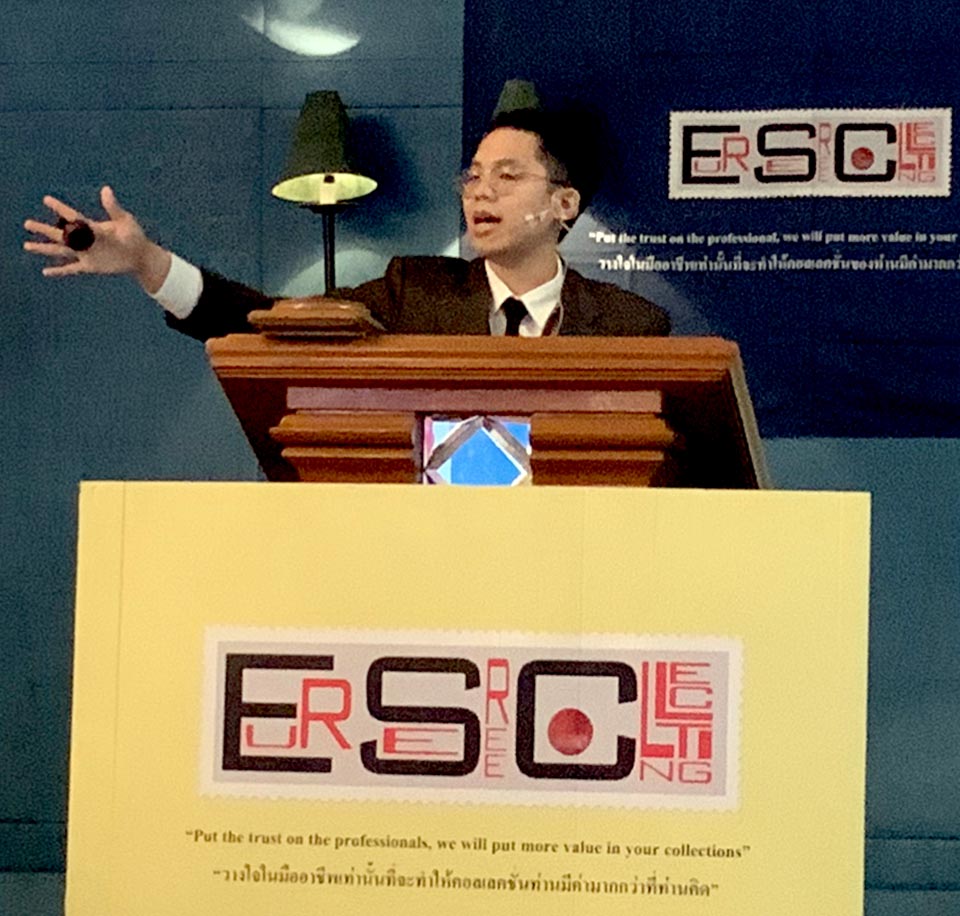
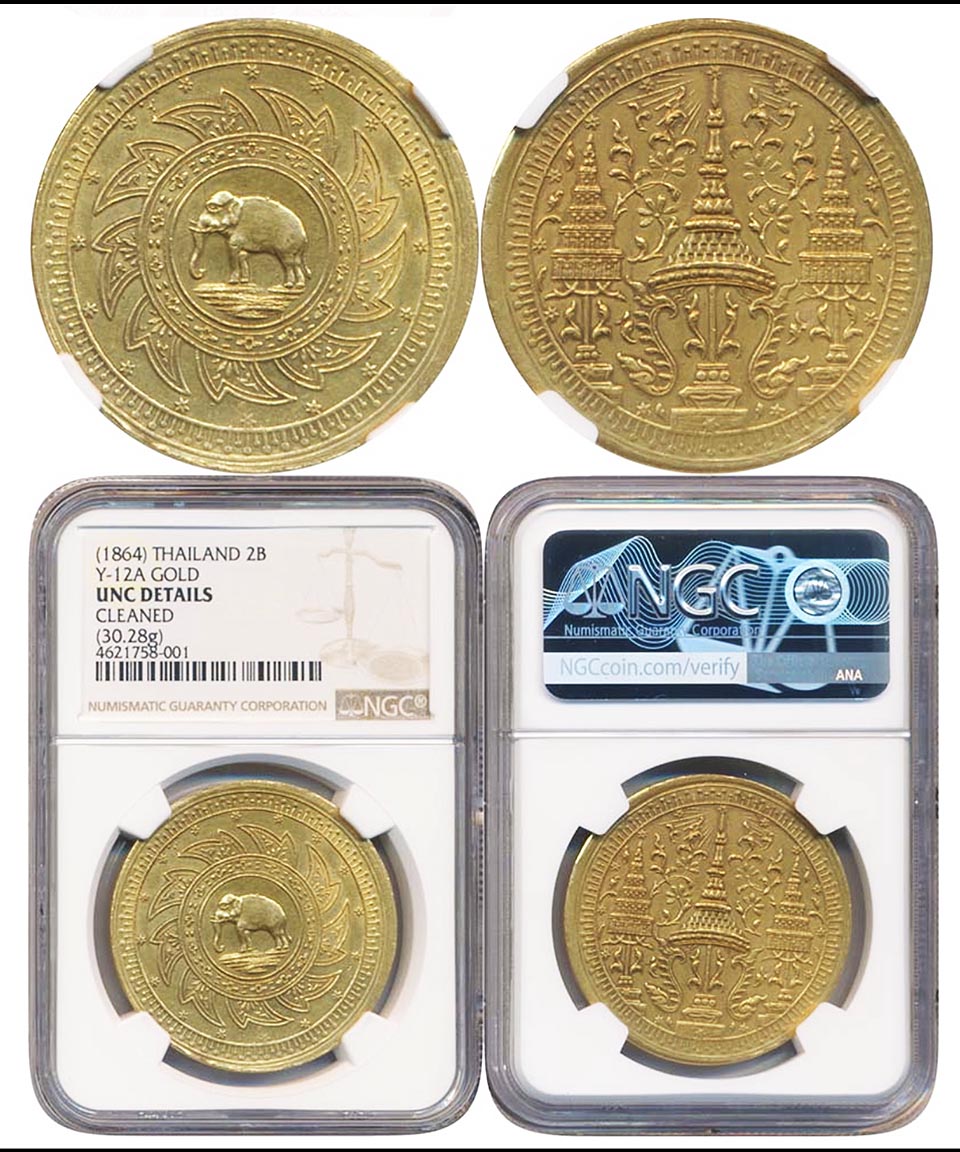
In my opinion the big surprise in the auction was the 2 Baht gold coin struck in 1864. The coin was graded by Numismatic Guaranty Guild, NGC, to be UNC, Uncirculated, but cleaned. The coin had a starting price of Baht 1,500,000 which I would say was a reasonable amount to start with. I expected a hammer price around Baht 2,000,000 but it was sold for Baht 5,200,000. A record-breaking price for this coin.
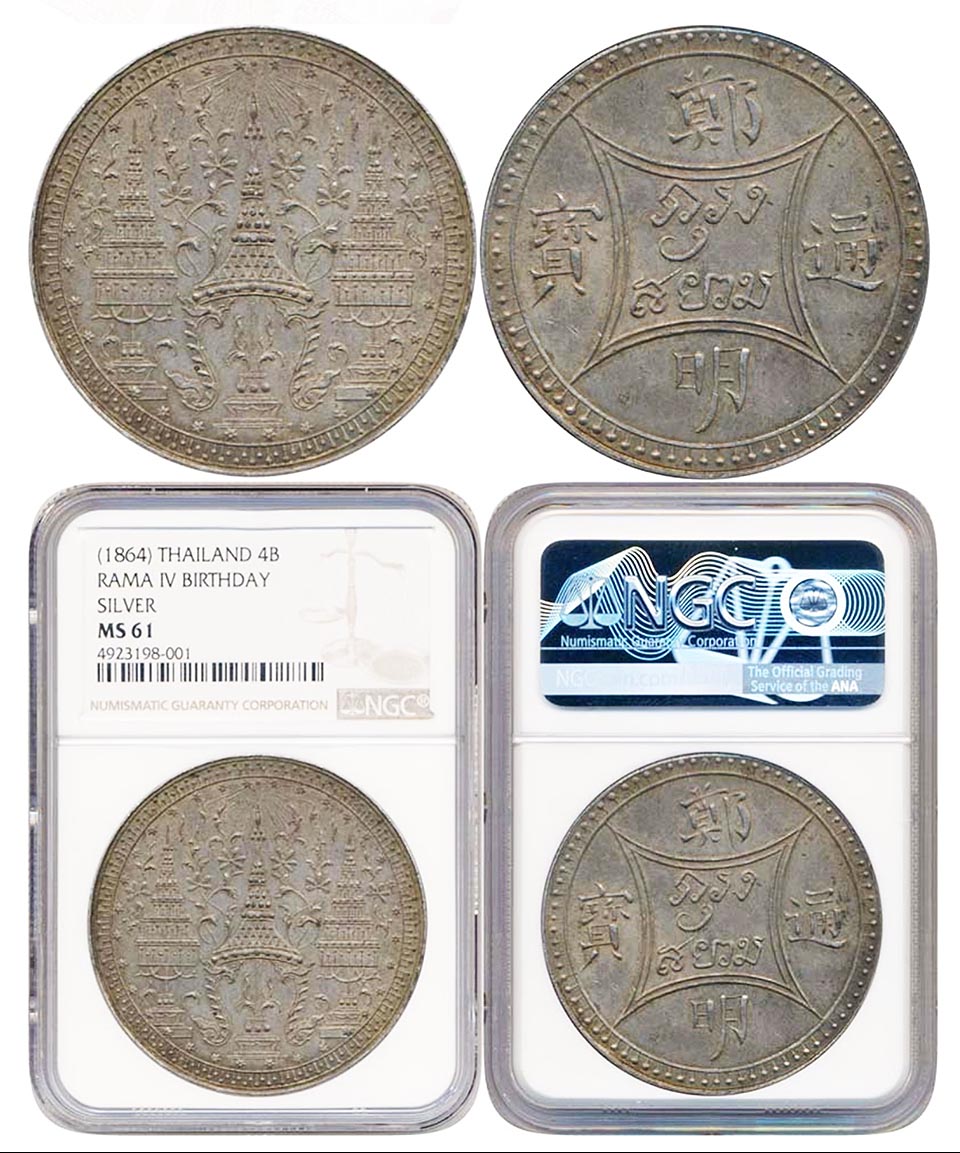
Two of the 4 Baht coins in silver, struck in 1864 for King Mongkut, Rama IV’s, 60th Birthday. These have the same design as the 4 Baht in gold, sold for Baht 8,200,000. One of the 4 Baht in silver was graded by PCGS to be AU55, starting price Baht 700,000 and sold for Baht 860,000. The second 4 Baht silver was in better condition, one of the best graded by NGC to be MS (Mint State) 61. Starting price was Baht 1,500,000 and it sold for Baht 1,900,000 to bidder 907.
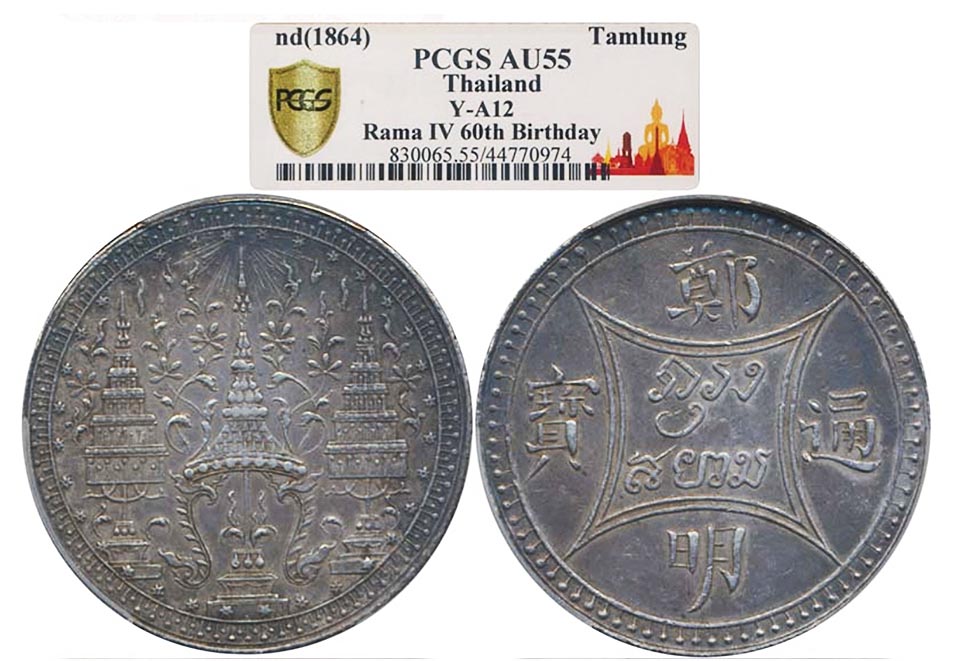

A One Baht coin also struck in 1864 had a starting price of Baht 500,000. According to PCGS, Professional Coin Grading Services, the coin was Genuine, Mount Removed -XF (Extremely Fine) Detail. The coin had been sold not graded at Eur-seree auction sale #16 on July 27, 2008 for Baht 500,000. In this auction it was sold for the same price of Baht 500,000. For this rare coin, probably more rare than the 2 Baht coin, I thought it was a reasonable price.

Bidder 709 was bidding by telephone. I observed that the bidding on telephone was done in English so probably it was a foreigner. Bidder 709 was the under bidder on the 4 Baht gold 1864. He bought the 2 Baht 1864 gold coin for Baht 5,200,000.
Bidder 907 bought the 2 Baht gold bullet coin from Rama IV for Baht 2,000,000, the 80 Baht bullet coin 1880 for Baht 7,600,000, the 40 Baht bullet coin 1880 for Baht 2,000,000, the 20 Baht bullet coin 1880 for Baht 700,000 He did not buy the 10-, 4- and 2 Baht 1880 bullet coins. Probably he had them already. Bidder 907 also bought both the two 1864 – 4 Baht silver coins for Baht 860,000 and Baht 1,900,000.
Bidder 979 bought the 80 Baht bullet coin 1864 for Baht 6,000,000 and the 10 Baht bullet coin1880 for Baht 300,000.
These active bidders could have bought other coins as well. No doubt there are collectors willing to spend millions of Baht on their coin collections.
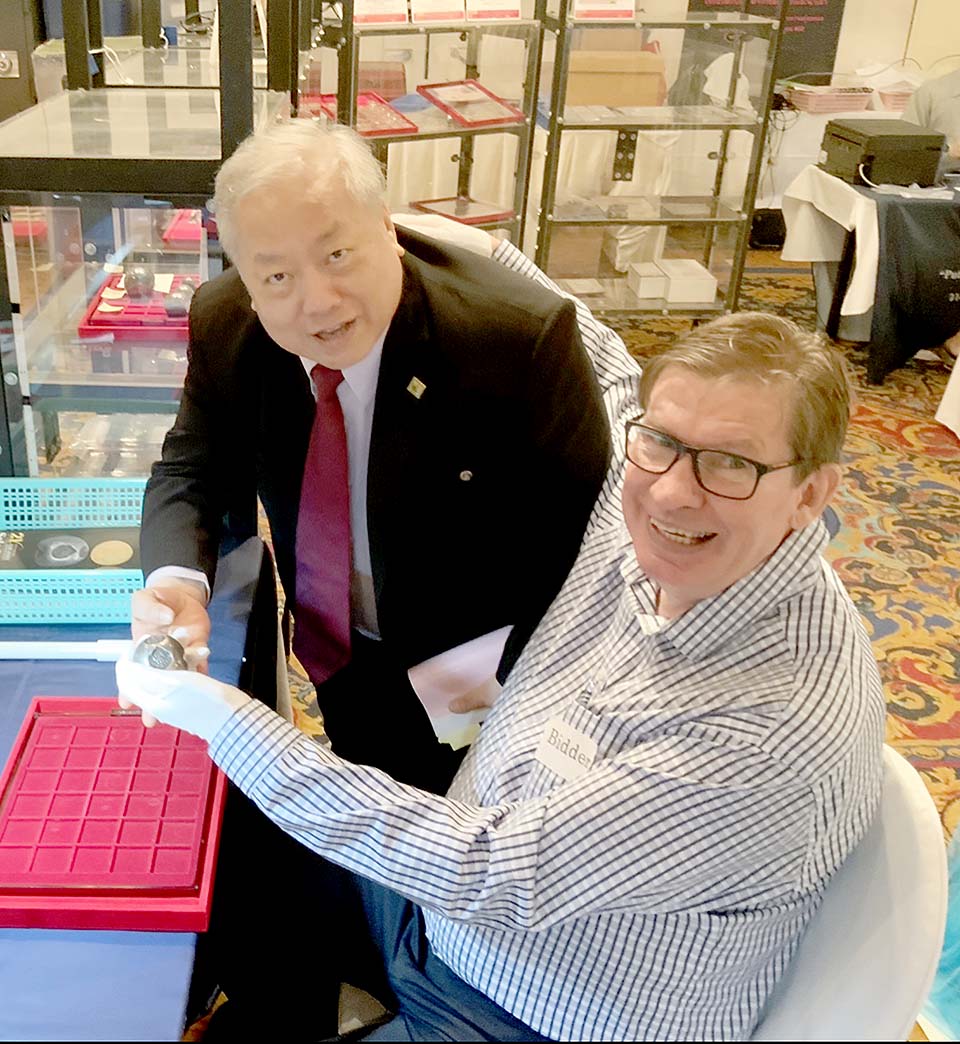
Vitoon Eurtivong, CEO of Eur-Seree Auction House, registered 388 bidders in sale #63. 314 of the registered bidders bought at least one item. Around 25 foreigners were present who were very actively bidding on the tokens. Several European and US dealers and collectors who attended the Singapore Coin Fair the weekend before, paid much attention to the Rama IV and Rama V raw (not slabbed) coins. They found the graded coins were at too high a price.
The Solid and Lucky numbers banknotes were softening a bit, but the ones with numbers like 99999 were still doing very well. Vitoon was really happy with the auction, having made sales of more than Baht 90,000,000, including the premium the total came to more than one hundred million Baht. He is always happy to see new and younger collectors attending the sales.
Acknowledgments:
Thank you to Pratheep S. Malhotra for your valuable help.
References:
– The archives of Thomas de la Rue & Company, Limited, London
– 50 Years of the Bank of Thailand 1942-1992.
– The Treasure Department, Coinage of the Rattanakosin Era AD 1782-1982”
– Bank of Thailand, “Centenary of Thai Banknotes: 1902-2002”
– Bank of Thailand, BOT Museum’s Masterpieces
– Somchai Saeng-ngern, “Thai Banknotes Catalogue, Complete and Updated Edition”
– Illustrations of banknotes from Jan Olav Aamlid collection
Copyright © 2023 All rights reserved by Jan Olav Aamlid – Member IAPN and IBNS LM-025





